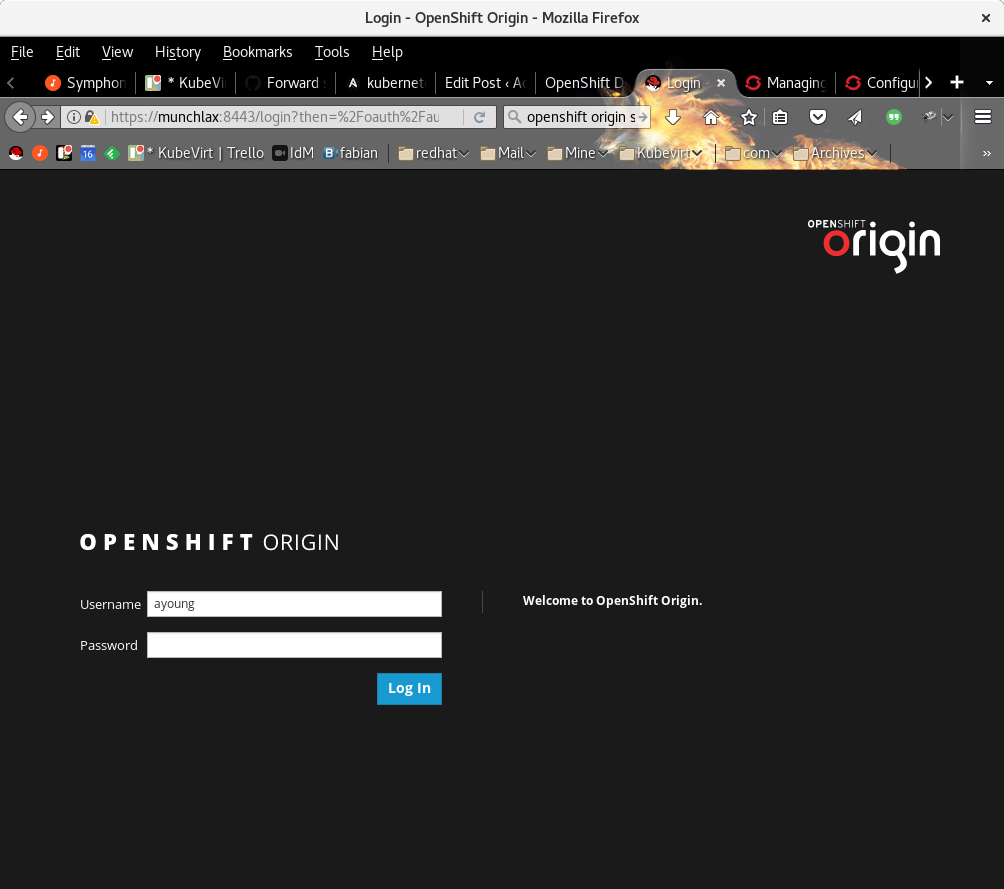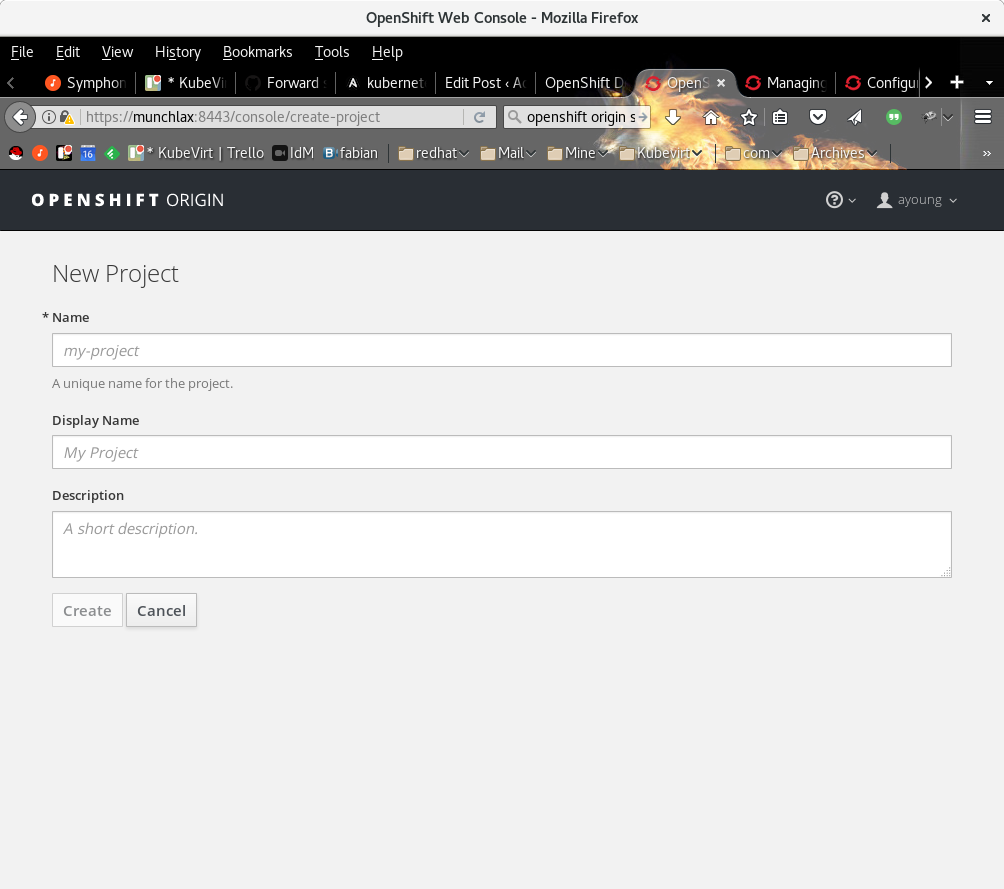Once I got the Ansible playbook to run, I was able to poke at the openshift setup.
The install creates a default configuration in the Ansible users home directory on the master node.
I can use the openshift client:
ssh ansible@munchlax oc get pods NAME READY STATUS RESTARTS AGE docker-registry-2-z91cq 1/1 Running 0 18h registry-console-1-g4qml 1/1 Running 0 20h router-5-4w3zt 1/1 Running 0 18h
ssh ansible@munchlax oc create user ayoung
Or even the kubectl executable:
$ ssh ansible@munchlax kubectl get pods NAME READY STATUS RESTARTS AGE docker-registry-2-z91cq 1/1 Running 0 18h registry-console-1-g4qml 1/1 Running 0 20h router-5-4w3zt 1/1 Running 0 18h
If I want to pull this over to my home machine, I can use rsync:
rsync -a ansible@munchlax:.kube ~/ [ayoung@ayoung541 kubevirt-ansible]$ ls ~/.kube/ cache config munchlax_8443 schema [ayoung@ayoung541 kubevirt-ansible]$ kubectl get pods NAME READY STATUS RESTARTS AGE docker-registry-2-z91cq 1/1 Running 0 18h registry-console-1-g4qml 1/1 Running 0 20h router-5-4w3zt 1/1 Running 0 18h
Although the advice I got from sdodson in IRC sounds solid:
ansible_user on the first master should have admin’s kubeconfig in ~/.kube/config The intention is that you use that to provision additional admins/users and grant them required permissions. Then they can use `oc` or the web console using whatever credentials you’ve created for them.
I can use the WebUI by requesting the following URL from the Browser.
https://munchlax:8443/console/
Assuming I bypass the Certificate warnings, I can see the login screen. Since the admin user is secured with a Client Cert, and the UI supports password login, I’ll create a user to mirror my account and log in that way, Following the instructions here:
[ayoung@ayoung541 kubevirt-ansible]$ oc create user ayoung user "ayoung" created [ayoung@ayoung541 kubevirt-ansible]$ oc get user ayoung NAME UID FULL NAME IDENTITIES ayoung cca08f74-3a53-11e7-9754-1c666d8b0614 [ayoung@ayoung541 kubevirt-ansible]$ oc get identities No resources found. [ayoung@ayoung541 kubevirt-ansible]$ oc get identity No resources found.
Hmmm, no Identity providers seem to be configured. I see I can override this via the Ansible inventory file if I rerun.
I can see the current configuration in
sudo cat /etc/origin/master/master-config.yaml
Which has this line in it…
kind: AllowAllPasswordIdentityProvider
perhaps my new user will work?
From the login screen. Using a password of ‘test’ which I have not set anywhere.

I get logged in and see the “new project” screen.

This works for development, but I need something more serious for a live deployment in the future.

FYI, I wrote this up a while back (and the two follow-ups) that may be interesting to you:
https://sgallagh.wordpress.com/2016/05/26/openshift-and-sssd-part-1-basic-ldap-authentication/
Awesome! LDAP really should be done via Federation support, and multi LDAP would fit in there. I wish we had done that in Keystone.